Nobody likes bland backyards! Aquarists today are setting up beautiful backyard ponds that appear appealing and enhance the overall look of your outdoor settings! Once your pond’s work is almost complete, it’s time to think about getting some fish for the pond. But wait, before you do, you should think about getting the best top-rated pond fishes, so you know that they will thrive in the environment in which they are placed.
Some fishes are not meant to live in a pond, while others live their best lives in backyard ponds. The key is to find fish like the koi fish that do well in the water garden and outdoor ponds. Many other options from the fish population can also survive in outdoor ponds.
This guide will take you through a table of contents of the best water fish to find you the top-rated fishes for ponds and give you plenty of good options. No matter what your pond looks like, these fish for ponds reviews are designed to give you options for the perfect pond fish!
Let’s take a look.
Table of Contents
Top Rated Fish for Ponds Review
In this section, we will take you through some of top rated pond fish anomalies, complete with all of the details you need to know. These pond fish reviews provide a means for you to make an educated decision specifically related to your preferences and your pond.
1. Koi Fish
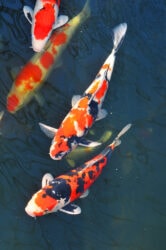
Koi fish come from the fish species of carps and they are great fish for a pond. These are perhaps some of the most popular fish for ponds. They will do quite well in an outdoor pond. As far as looks and color go, koi look a little bit like fancy goldfish. Koi also do well with a variety of pond plants.
Koi have unique shapes and colors, compared to their coy counterpart. Some can be small fish, while others grow to a pretty large size. For koi, your pond will need to have at least 1,000 gallons of water. These will slightly larger ponds.
Another thing you will need to keep in mind is to have a good filter system as well as optimal aeration. Your koi need room to swim and move around for their own health. The water quality is important, which is where filtration and aeration come into play.
Koi carp can handle the wintertime if you take the appropriate precautions for an air pump. You might also want a floating heater to help keep them warm. This is mostly to maintain water temperature so it doesn’t turn to ice and to bring oxygen into the water when it is cold.
Koi carp is a pond fish species that tend to forage the bottom of the pond for fish food. They do well in outdoor ponds that have aquatic pond plants. A garden pond with hyacinths and water lettuce might even be a great option.
Koi can even thrive in outdoor ponds that have earth bottoms. They stay safe from predators by hanging out at the bottom of the water pond and they love plants so they don’t spend a lot of time at the pond surface.
The koi carp has beautiful colors that tend to stand out in the wild. Predators may be drawn to their colors but this is where plants may be a means of protection. A large pond that gives them plenty of room to graze the bottom and swim around will be way more safe in the long run for a koi carp fish.
You should also plan to feed your koi fish food in addition to letting them thrive on their choice of plants to provide a means for their health to sustain.
2. Mosquito Fish
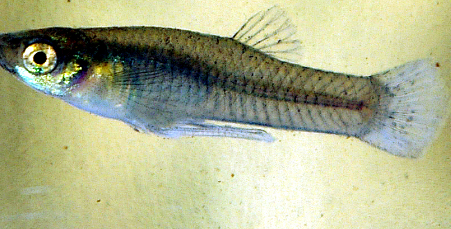
You’re undoubtedly curious as to why they’re referred to as mosquitofish. For starters, as the name implies, their primary source of nutrition consists mostly of mosquito larvae. In their native environment, they also eat flake food plus algae to supplement their diet.
These silvery fishes have spread worldwide and have been incredibly effective in suppressing mosquito populations. Thus, having a few of them in your pond is usually a good idea since the stagnant water attracts mosquitoes. These are among the tiniest pond fish you’ll ever see in terms of size. The mosquitofish is not what you would call a showy fish, but it does have its own set of characteristics that make it stand out.
However, while they are primarily employed to control mosquitoes in tiny ponds, they are also a visually appealing feature in their own right. According to National Geographic, when the males are ready to mate, their bodies turn a dazzling red color, and they are among the few livebearer fish that really can survive in freezing water.
They will perish if the pond freezes, even though they can withstand low temperatures better than many other species. The only thing that can kill them is extreme heat, and even though they may survive in the most extreme situations, make sure to keep them away from the searing heat and stagnant pools of water with low oxygen concentrations.
Even outside predators’ absence, they will overpopulate a pond; thus, it is important to check their numbers. Fortunately, they are highly in demand for insect pest control purposes, so you will have no issue petting them in your pond to drive mosquitos away.
3. Goldfish
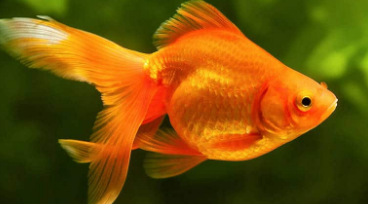
The goldfish is another really great pond fish. These fish live in pond water and require little maintenance. They can hang with pond plants or explore your water garden and they might even help with mosquito larvae issues from the pond.
You can choose from small fish or fancy goldfish but these swimmers can get pretty large, particularly the males. Koi and goldfish are the two most popular wildlife that is used for ponds. They survive in many different regions. The common goldfish is originally from North America but it has found its way to all parts of the world and lived to tell the tale.
The goldfish is another species of carp so they adjust well to pond water and have a lot of similar characteristics of both koi and goldfish. You might have heard of goldfish like the Sarasa fish and the Comet Tail. These are two popular selections of common goldfish that are sometimes considered fancy goldfish.
Related Review: Comet Goldfish Care Guide
Goldfish swim slowly but they do need areas to swim. Their bright colors might make them easy prey if you are not careful. Goldfish do come in many different shapes and colors. Fancy goldfish, in particular, have beautiful patterns that stand out against any pond fish species out there.
Many of us only really know the common but the fancy goldfish is just as great and they all can thrive in an outdoor pond or water garden. Goldfish do tend to be smaller, which means they don’t need as many gallons of water as koi and they can live in love ponds, garden ponds, and other smaller pond choices.
Goldfish are known for gliding through the pond. We don’t recommend keeping goldfish in a waterfall pond as the water movement isn’t great for some fancy goldfish. You also may want to be mindful not to mix different types of goldfish in the pond because creative commons tells us that some of the styles cannot compete against others for food.
The water temperatures do not have to be maintained but you also don’t want your pond to freeze over in the winter. Keeping knowledge like this in mind will help with spring care and all other environments for goldfish.
We think you’ll like: Low Maintenance Fish for Beginners
4. Sunfish
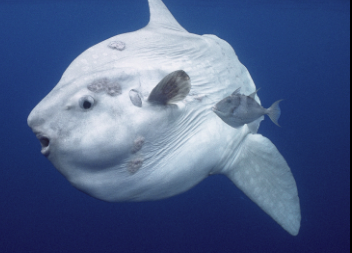
Sunfish are another underappreciated pond fish that, in our view, is a superior alternative over goldfish or koi in terms of appearance. Some sunfish species have hues that rival the most vivid cichlids, and they are resilient and highly adapted to life in cold water environments.
It is one of the characteristics of sunfish that makes them particularly well suited for ponds: they like to swim near the surface and also in shallow water, so they are constantly visible rather than hiding, as certain koi and goldfish are inclined to do.
Waterfowl species such as bluegill, pumpkinseed (our personal favorite), and redear sunfish are among the most popular pond species. You should conduct some study to see which breeds of sunfishes are local to your region since they remain the best choice for a pond. You should also consider the size of the pond.
For many individuals who stock sunfish in big ponds, it is common to practice incorporating predators such as largemouth bass to help control the sunfish’s population. Sunfish may soon overrun a pond if left to their ways, causing them to overpopulate it.
Though finding a fish dealer to supply your pond with sunfish may be challenging, large-scale fish farms in most places will be willing to sell a limited quantity of sunfish to a willing buyer. The last resort is to go fishing – provided that it is permissible in your location.
5. Farm Equipment Fish
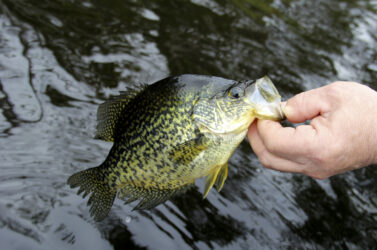
Another popular type of pond is a standard farm pond. In these ponds, you’re going to see less worry about air stone or water temperature and simply want a suitable fish designed to provide weed control winter care and basic life inside the spread pond.
The purpose here is to avoid maintenance disease that eats up your costs for a pond but you might also be looking for mosquito fish to help keep the insect larvae and mosquito larvae at bay. Qualifying purchases for the farm are fish that are not really meant for looks.
6. Sterlets
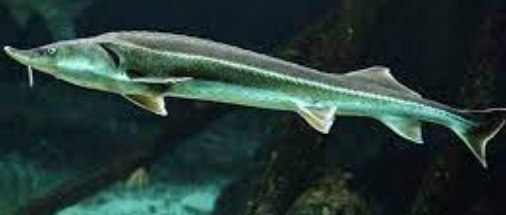
Sterlets are a subfamily of sturgeons that are found in the United States. These species are distributed across the frigid waters of Eurasia – Siberia and the rivers that feed into the Black Sea, the Caspian Sea, and the Azov Sea. They have been completely suited to colder environments and lifestyles.
The sterlets are on the verge of becoming critically endangered since their natural environment is either becoming more and more polluted or because of the overfishing problems in the area.
Sterlets are a fantastic choice for your pond because of their hardiness and adaptation to cold water conditions. They have a distinctive look, with black bodies and white stripes and barbels on their lips. The average lifespan is 22 years, with few sterlets living as long as 25 years.
They may require particular meals if you intend to maintain them in a pond since they would have been unable to digest some proteins in commercial feeds and pellets.
Nevertheless, the sterlets are an excellent choice for pond fish because of their small size. Another point to remember is to avoid having too much vegetation in your pond since the sterlets may become caught in the foliage.
Their maximum length is 3 inches or less; therefore, they require less water per fish, making them perfect for ponds with a smaller volume of water.
7. Chinese High Fin Banded Sharks
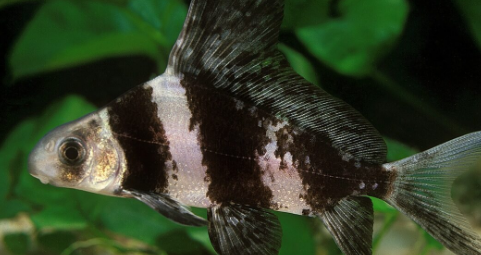
For pond keepers, high fin banded sharks are a renowned freshwater fish species that are incredibly unusual and a must-have. They’re known as banded sharks or banded loach.
High-Performance Fin Sharks with bands on their bodies are not sharks at all! Instead, they’re kind of a suckerfish.
There are your typical algae-eating freshwater fish with only a single row of pharyngeal teeth and a few unusual species. We name them sharks since they have a long, sharp-like fin at the top of their bodies that resembles huge sharks in appearance.
However, keep in mind that they demand a bigger pond space because they grow to around 1.35 m in length (4 ft 5 in). Furthermore, the High Fin banded shark’s patterns are magnificent, making it a delightful option for your ponds.
They are tough to come by in the area. We suggest that you purchase your fish online or at one of the Leading Internet Fish Stores.
8. Fathead Minnow

The fathead minnow is a freshwater fish that has only been found in North America and is indigenous to the region. Over the years, the fathead minnow has been successfully introduced into various diverse environments. It is marketed as a feed fish in the United States and Canada.
If you see this fish in the wild, it’s a drab olive-grey hue with a dark stripe along its side and a bright belly. This fish may grow 2.5-4 inches in length (7-10 cm).
They are tolerant to a broad range of water conditions and habitats, explaining why and how the fathead minnow is so extensively distributed worldwide.
Smaller fish ponds or perhaps even tubs can house these creatures. Fatheads are extremely resistant to low oxygen levels in water but tend to survive in harsh circumstances that are inhospitable for other fish species.
Fathead minnows are simple fishes to raise and breed. They often spawn when the water temperature falls below 64 degrees Fahrenheit (18 degrees Celsius). A female fathead minnow could lay eggs up to 25 times each year, depending on her size. They will lay between 6,500 and 10,000 eggs every year.
This is an excellent pick for your pond if you are searching for a fish that is easy to breed and strong.
Here are a few of the most popular farm fish varieties.
These pond fish are common fish that people catch when they head out to the water. Unlike goldfish varieties, they are meant to perform without a lot of requirements. You might even see catfish out there on the farm pond.
So what is the purpose of this breed and habitat? In some cases, the wildlife are used for gaming purposes. They might be used for fishing or for fun or even for bait when they go out to high depth waters. These cases are not for fountains and fancies but they can be good for a farm pond and you can fish a couple if you want to.
The thing to keep in mind if you decide to browse and fill a farm pond is that at times these fish can be aggressive and territorials. They are looking for foods to sustain themselves and their group and they may not be friendly to intruders in close proximity.
Most farmers are well aware of this propensity and won’t just whatever fish they find in there. A little bit of research tells us that mixing fish could lead to fish against fish. However, all of these fish do well to help maintain the character of the pond, from reducing vegetables to even providing essential minerals for the rocks and logs in the area.
In a farm pond, warmth and water temperatures are not a point of heavy importance for the numbers. They are made for all weather environments. You will find that these animals can survive life outside of an aquarium just fine. Reproduction typically takes care of itself so you don’t have to refill the pond too frequently.
Often times, these fish are used to maintain the overall appearance of a farm pond in the field so that the farmers don’t have to spend their time dealing with the growth in the pond and can just leave it anywhere with the fish in charge for minimum maintenance purposes.
Most of these fish will take care of themselves. They will be feeding on local plant life and their scales and tails will be just fine without any problem, even in different climate options.
1. Algae Eaters
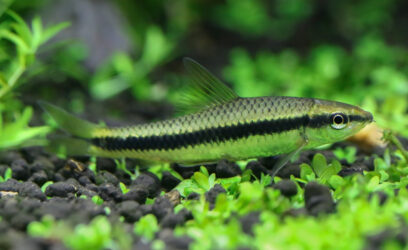
Algae eaters are another of the best fish that you can put into ponds. These algae eating machines are designed to provide clean pond environments with less cleaning and maintenance on your behalf. Their work is to keep algae at bay much like red shiners are mosquito fish that keep mosquitos at bay.
While we’re on the topic, red shiners are a great mosquito fish so if you are in a climate where this could be an issue, we recommend looking into adding a few of these to your pond.
The algae eater is also commonly referred to as a Gobi. These fish are neutral colors that blend with rocks and pond water so they are not openly visible to the predator’s eye. They help you with pond maintenance and you have to do very little to keep them healthy and alive.
Some of these fish can grow up to 6 inches in length. Their growth primarily depends on their environment so if they are in a small pond, they will not grow quite as large. These do help with algae but their primary diet is to eat things like worms, insects, and snails. This fish heralds from South America but thrives in any temperature and climate as well. Their size can vary based on the conditions.
You will find that these categories have a broad diet and can live in part on insects. They blend in so their navigation is simple in addition to their range of food needs. Their home coloration is really like camouflage for them.
Insects, mosquitoes, and other pests can’t bring these fish down! You will need to keep in mind that while the algae eater helps with maintenance, you still need a good filter. They work best in a school of 6 or more. You will also need to plan to have more gallons of water as they like to stay fairly deep.
Related Review: Siamese Algae Eater
2. Pond Loach
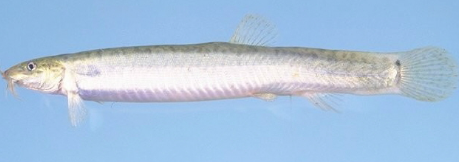
Pond loaches, also known as dojo loaches, are lovable bottom-dwellers that help maintain the substrate clean and free of debris. Pond loaches are only around six inches long when kept in an aquarium. On the other hand, large ponds have the potential to become much larger.
This species of loaches are like many others. They are frequently misidentified as eel. There are little fins on its body, making it difficult to notice when swimming in murky water. This one has a pointed snout with an underturned mouth, allowing it to forage and burrow more easily than most other fish.
Pond loaches become excellent scavengers when combining these characteristics with the sensory barbels surrounding the mouth. As a result, they are among the most resilient pond fish you could find in their ability to flourish.
This species offers a wide range of options whenever it comes to color. Most of them are a neutral tone of olive green, grey, or light brown. Minor characteristics like black patches and a whiter belly give the fish’s body some depth without interfering with its ability to remain concealed in the water.
Always isolate new fish before exposing them to the main pond. When introduced to the main pond, the fish are healthy and free of illness. These are very robust fishes that can survive in even the most unsanitary environments.
Keeping a Koi and a Pond Loach pair in your pond might be an excellent approach to battle algae growth. Pond Loach is known to consume insects and other tiny aquatic animals and their preference for the bottom of the water. If you’re dealing with mosquitoes, look at these practical solutions for dealing with mosquitoes in your pond.
Loaches are highly active fish that would conceal and investigate their surroundings. It may vanish after being introduced to your pond and then emerge later. As a result of their high jumping abilities, consider adding obstacles or checking the filters if your pond loach is not getting out to play.
Choosing The Best Types of Fish for Your Pond
As you set out to choose some fish, you might want to have your email address handy for the pond informer sites. You can get some great information and resources with comment name details. Our pond informer style is to make sure you have all of the relevant information to choose the best variety of species of fish to coordinate with your plants, temperature, pond size, and more.
Fish Species to Exercise Caution With
There are two specific species in the variety of fish choices that you may want to take care of when using. While one or two different types might be ok there are some varieties that you won’t want to have more than 1 type in there with. You can have 10 or 15 of the same kind but must be careful about others.
1. Catfish
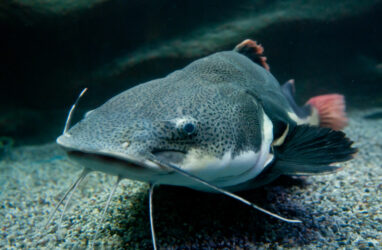
The first one to be aware of is catfish. These fish can handle any water and just about any temperature. They forage for their own food and they can hang out with 50 other catfish and grow to some pretty hefty size measurements. Predators are not likely to be a participant in eating your catfish.
The catfish can get pretty wild, which is important to know in the navigation of choice. The catfish is a willing participant and might makes friends with the other 15 fish you have but they also have a short temper. They certainly don’t make good pets.
Catfish can be wild bullies that like to start fights and if you have a range of other 2, 5, or 10 fish they might not be able to defend themselves against the size range and sheer force of a catfish. We recommend that you be selective about what you place in a pond in addition to catfish to avoid one issue such as this in 2021.
Channel Catfish are distinguished by their whisker-like tendrils, which give them a catlike look. In addition to being an omnivore and scavenger, it is an incredible algae eater. It is a very well-known fish, and it feeds on the bottom of the food chain. You’ve seen them on fishing excursions and at pond shops, which is especially true if you live in North America, where they are in plentiful supply due to their geographic location.
Catfish are known to be aggressive. They may attack and consume other fishes their size or crustaceans, which could be problematic depending on the other species in your pond, so keep an eye out for them.
However, they may make suitable pond mates given the climate and food. Catfish will also consume large quantities of various algae, but they may also consume your pricey koi food and force your koi to leave the aquarium.
Catfish are very strong and can go from 1 to 100 on that scale in no time. They have the strength to eat smaller ones or even bite bodies in half of some kinds of categories out there.
2. Sturgeon
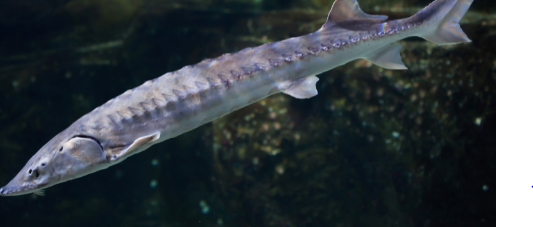
The sturgeon is another fish that you should use caution within aquariums and ponds. These fish prefer not to be in groups and like to do their own thing. They can thrive in many areas and really display beauty but they can get very large.
It can be hard to work with sturgeon because they are picky about their temperatures. These fish need cold water and a good amount of it. They aren’t a fan of the sun making their water hot. They do like shade and cold water and the sturgeon may not even try to thrive in any other setting.
Fish Groups To Avoid For Outdoors
Next, there are some fish to discuss in this article that you may want to avoid using in posts. While their beauty might draw you in, you must be careful.
Some of these do amazing on the inside or in regulated spaces but don’t do as well outdoors.
1. Plecos
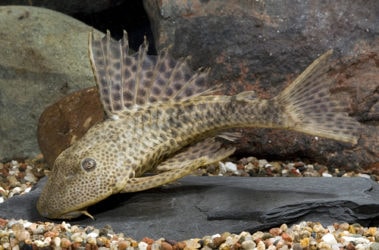
These little things feast on parasites and algae and you would think you can just toss them in like minnows but you can’t. They need heat. If you do place them outdoors, be sure you have heat in the pond.
You might be better off using minnows if your goal is to regulate insects and such.
2. Tropical Fish
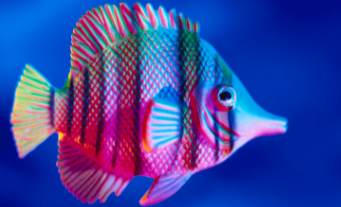
You shouldn’t ever place the tropical variety in an outdoor pond unless you are in a tropical environment. While they look nice to us, they also look nice to predators. At the same time, they also need a lot of warmth which can be challenging to keep up with.
Fish Acclimating
All fish must be adequately acclimated to the water in the outer pond before being released. If you already have a pond, it’s best to mix half pond water and half fish tank water in a bucket and place it near the pond. Allow the fish to use the new water for approximately an hour, aerating it with an air stone and an air pump.
The fish must be placed in a plastic bag filled with the water from where they came allowing them to float for at least 10 min before being released into the pond or fountain, regardless of whether or not you followed the water acclimation procedure.
Consequently, a gradual equilibration of water temperatures occurs between the bag and pond, preventing the fish from being frightened by a temperature difference in its new surroundings.
Guarding Against Outdoor Predators
Although the fish ideal for outdoor ponds is tough, you must always watch for predators. The steady addition of new fry will exceed the ability of any predator to catch up with some species, including guppies, platys, swordtails, especially mollies, which are prolific breeders. However, some of the larger fish, such as goldfish and koi, may see their populations fall due to assaults by cats, raccoons, large birds, and other predators.
Provide your fish with various hiding spots, such as caverns at the bottom of the pond and plant cover, to keep them safe. You may also use netting to cover the pond and fake statues to scare away any predators that may be there.
Conclusion
Filling up the pond with plants and fish is a given. Your goal may be to have a range of one or two that just look really great or it may be to help maintain the plants in the area. Whatever your reasoning, be sure you choose an option suitable to your needs and nature or landscape region into which they are being placed.
Expert Tip
The best type of fish for a small pond in 2021 is the goldfish, particularly a fancy goldfish. You can also try algae eater, shubunkins, and even a minnow or 2.
Did You Know?
Shubunkins are spotted and colorful goldfish that are strong and sturdy. Shubunkins have a pretty calico print on their bodies and fins that sets them apart in name and visibility.
No related posts.
